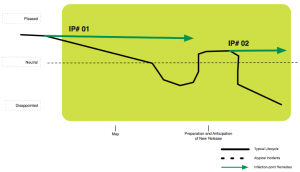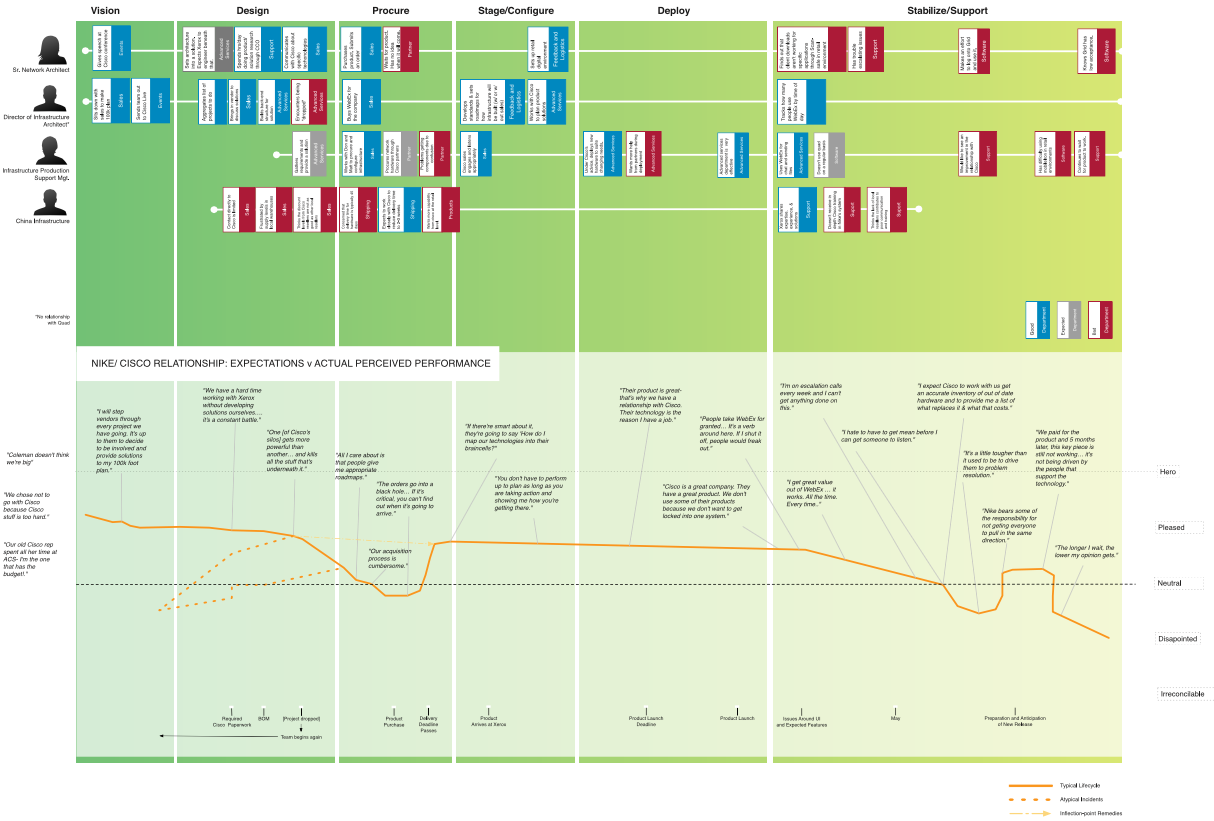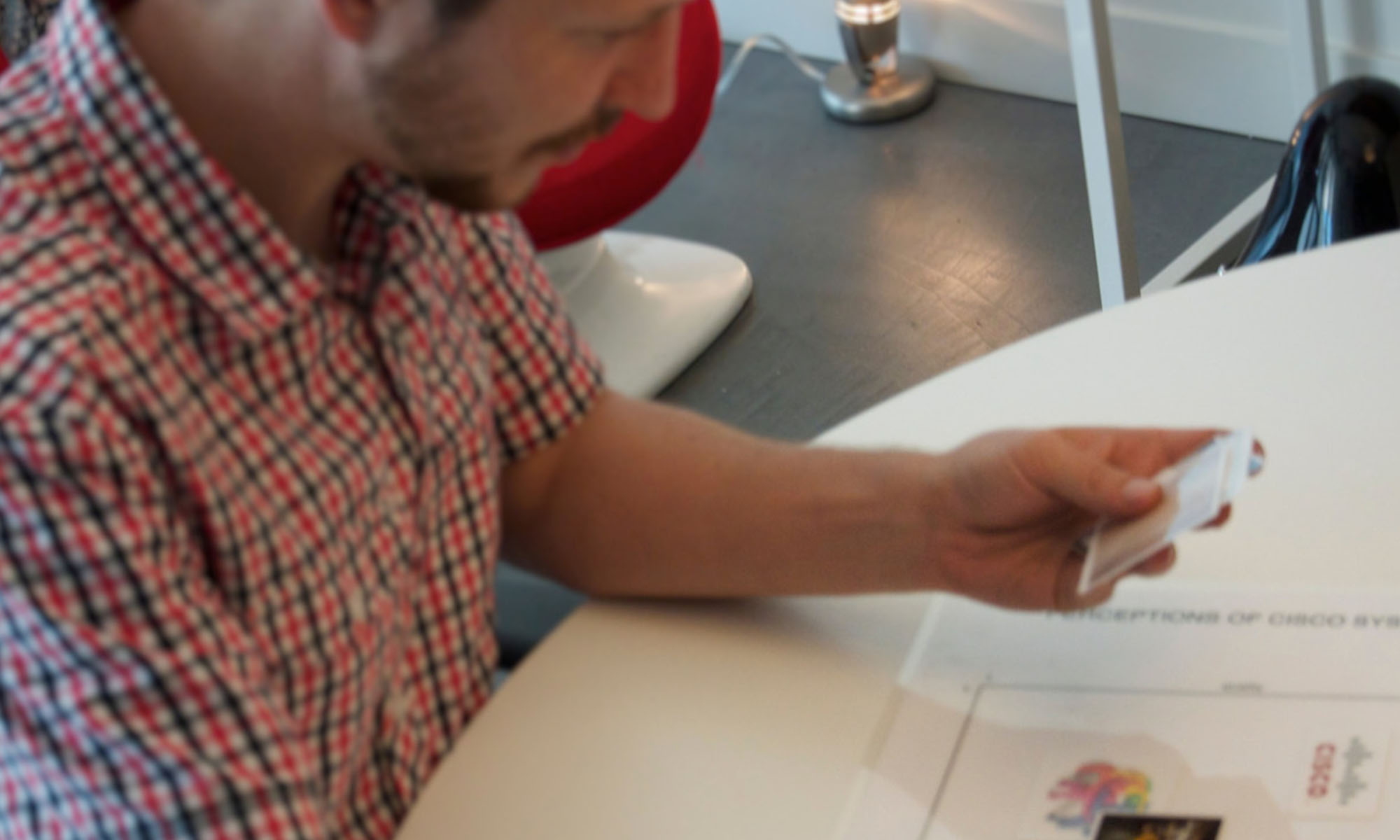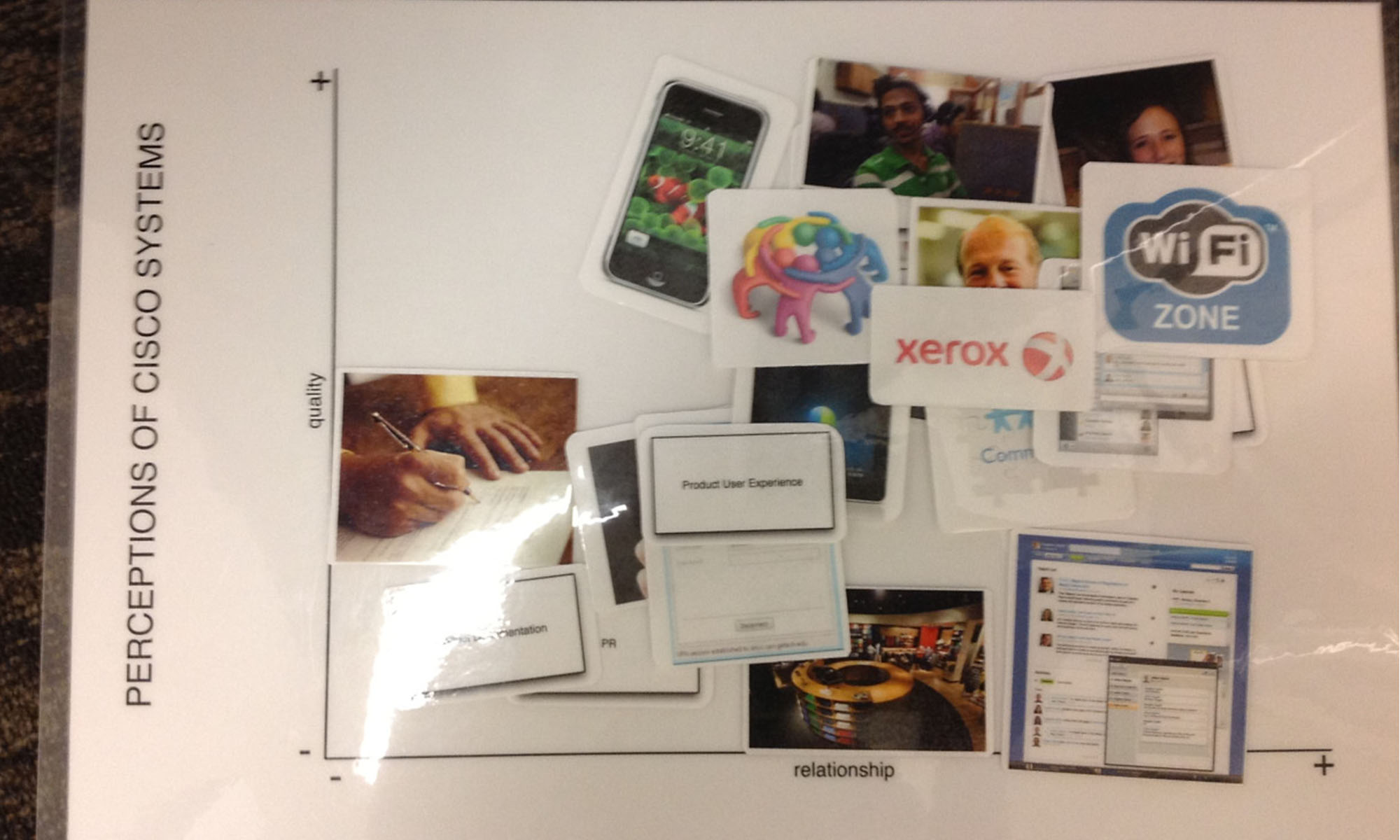How do you get the customer’s voice to carry enough weight to sway teams? You give it context. Cisco had lots of listening programs but they rarely led to concrete action. That all changed in the summer of 2011 when I introduced the experience journey mapping program at Cisco. Instead of just listening, it was time to act. Digging into the experience of our customers, channel, and employees showed that our 170 acquisitions had fragmented our customers’ experience. The business silos were major reasons for our customer failures.
By changing specific inflection points, we were able to change the direction of a customer’s overall journey. Tweak a couple of these points, and it’s a completely different relationship.

Dwayne King, Chief Strategy Officer at Pinpoint, and I developed an open-ended approach to journey mapping. This approach made sure all the outliers were captured in context, which is critical. I focused on how the person interacted with the brand to make certain to capture the whole relationship. This means that a relationship journey I wanted to capture could be any time frame–from 12 days old to 12 years. Unlike most journey work, it didn’t only focus on a predefined sales cycle or transaction journey. This wide scope meant the postinterview work was easily 10 times more complicated. But the insights were 100 times more useful.
31 insights
Our outside-in approach gave us insights we could use that led me to create strategic brand experience programs to tackle systemic issues in Cisco.
We gained 31 distinct insights. I honed in on those that we, the global brand team, could directly influence. They were a stretch, and I had to redefine the brand team’s charter. With the support of my leadership and our CMO I pivoted the team to a strategic customer-centric organization. We began acting as a Chief Experience and Design Office would.
I started with the programs that would help us build global brand team’s credibility and relevance, and demonstrate immediate strategic value to the business:
- Winning with Words
- Industrial Design Language
- Software Design Language
- Environmental Design Language
- Moments that Matter (employee experience)*

The insights from the customer experience journeys led to a few hypotheses. Using the global brand team charter as my green light I then extended the research to the journey for our channel partners, and then ultimately our employees’ experience. This led to our a-ha moment–the holy grail of research.
The holy grail
We were able to see the direct connection of how the employee experience informs the customer experience. The experience threads were visible between the customer, partner, and employee journeys.
This direct connection between the customer and employee experience allowed me to tackle employee-facing programs, and implement widespread systemic programs. Hijacking the brand charter, we leveraged our brand to integrate our customer experience training and education programs as we onboarded new employees and to reach existing employees through organizational career development programs.
I was then able to empower my team to teach our methods to other teams inside the company. Ultimately we informed service design, product design, and the overall employee experience strategy.
*Started by the HR leadership team after my briefing with the Chief People Officer


